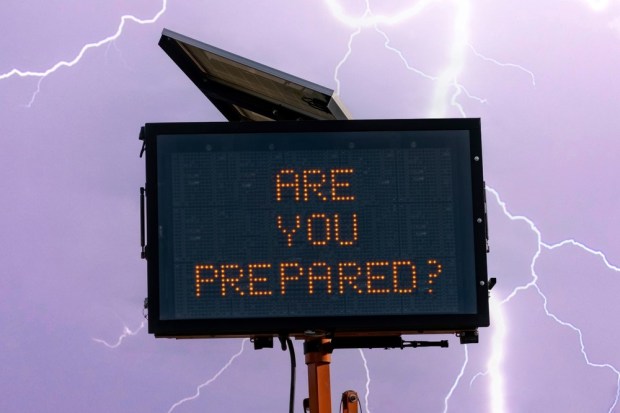Doomsday Ready: Costco Aims to Be the Go-To Retailer for Preppers

As many consumers look for ways to ease their doomsday anxieties, Costco is positioning itself as the go-to retailer for consumers who are worried about worst-case scenarios.
The warehouse club retailer is selling a discounted Emergency Preparedness Food Bucket promising 150 just-add-water food and beverage servings spanning 80 entrees and sides, 30 breakfasts and 40 beverages, all with a 25-year shelf life.
“In a world where unpredictability has become a constant, our assortment takes on a vital role in emergency preparedness,” the Costco product description states. “Imagine the sudden onset of severe weather, the challenges of unexpected job transitions, or the unsettling thought of food shortages. … It’s about having the peace of mind that comes from knowing you’ve taken proactive steps to secure your well-being.”
Notably, while Costco sells the bucket for roughly $80, Amazon is selling the same product for nearly 50% more at approximately $119.
This food bucket is not the only way Costco is capitalizing on consumers’ doomsday anxieties. The retailer has also seen the gold it sells drive eCommerce growth for several consecutive quarters. Gold is often seen as a source of reliable value during times of economic instability, such as recessions, inflation or geopolitical tensions.
The opportunity here is significant. A 2023 study from financial comparison platform Finder found that consumers had spent $11 billion on emergency preparedness in the previous year, with food and water being the most common such purchases, while a small but significant share (1% of women and 7% of men) bought precious metals.
Moreover, according to Reuters, Chris Ellis, a U.S. Army colonel who specializes in handling disasters and who researches preppers, found that that the movement now spans 20 million people. Ellis defines preppers as those who can survive up to one month without external resources.
Costco is not the only retailer looking to capture the opportunity presented by consumers’ disaster anxieties. Home Depot advertises its Emergency Preparedness goods with a range of shopping and informational resources. Competitor Lowe’s, too, offers similar options. Plus, electronics retailer Best Buy also offers educational content that links back to products in an effort to get in on shoppers’ worst-case scenario spending, and outdoors retailer REI provides similar resources.
Certainly, the current economic climate is exacerbating consumers’ anxieties. People are consistently reporting high levels of concern. A March PYMNTS Intelligence study found that 83% of consumers say they are concerned about their near-term economic prospects.
Plus, a May survey of more than 2,400 U.S. consumers for the “New Reality Check: The Paycheck-to-Paycheck Report” found that nearly two-thirds lived paycheck to paycheck, an 8-percentage-point increase in the last year and the highest on record since March 2022.
As consumers grapple with a landscape of economic uncertainty and unpredictable events, retailers like Costco are stepping in to meet their needs for emergency preparedness. By offering essential products at competitive prices, Costco not only provides a sense of security but also capitalizes on a growing market trend. With the added pressures of economic instability driving consumer anxieties, the demand for doomsday preparedness shows no signs of slowing.
For all PYMNTS retail coverage, subscribe to the daily Retail Newsletter.

